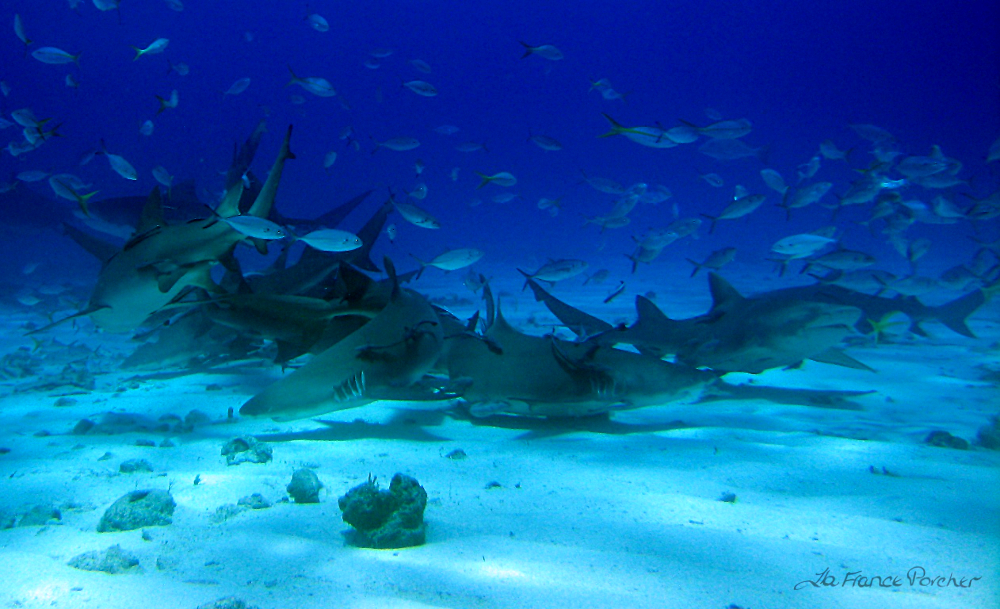
Social Sharks (Gallery)
The shark-whisperer

Ila France Porcher is a self-taught, published ethologist and author of "The Shark Sessions." A successful wildlife artist, she documented the behavior of animals she painted. In Tahiti, intrigued by the native sharks, she launched an intensive study to systematically swim with them and record their actions, following the precepts of cognitive ethology. Credited with the discovery of a way to study sharks without killing them, Porcher has been called "the Jane Goodall of Sharks" for her documentation of their intelligence in the wild. She contributed this article to Live Science's Expert Voices: Op-Ed & Insights.
Shark behavior is complex, with the animals exhibiting dramatic social traits and making decisions based on experience.
Forever friends?

Two female tiger sharks roaming together. Observations of tiger sharks suggest that they may roam with a companion.
Social butterflies

Like their distant relatives in French Polynesia, Caribbean reef sharks also appear to enjoy socializing.
One-of-a-kind

A lemon shark poses for a portrait. Each shark is an individual, with unique responses, its own pattern of spending its time, and its own rate of learning.
Buddies

Shark companions are usually of the same gender and age. Here two young companions unite, after circling away from each other for a time.
Got a wingman

Two male bull sharks traveling together. Nose-to-tail swimming is common among sharks — with males and juveniles, as well as females.
What's up?

The blackfin reef shark, Carcharhinus melanopterus.
Sign up for the Live Science daily newsletter now
Get the world’s most fascinating discoveries delivered straight to your inbox.
Hanging out

Caribbean reef sharks socializing together. Shark roaming correlates with the lunar phase, and thrilled shark congregations that form as the full moon rises, when visiting sharks are present, are often dramatic.
Follow all of the Expert Voices issues and debates — and become part of the discussion — on Facebook, Twitter and Google+. The views expressed are those of the author and do not necessarily reflect the views of the publisher.









